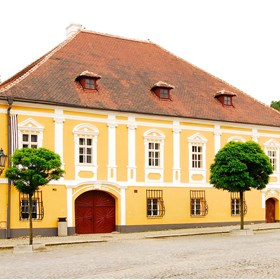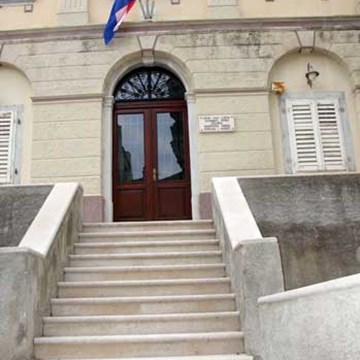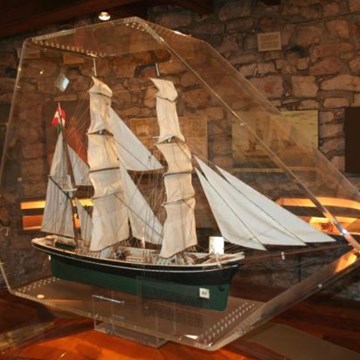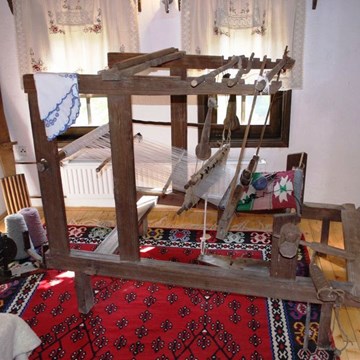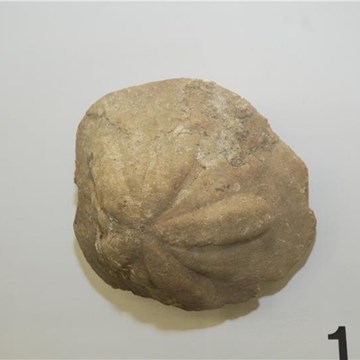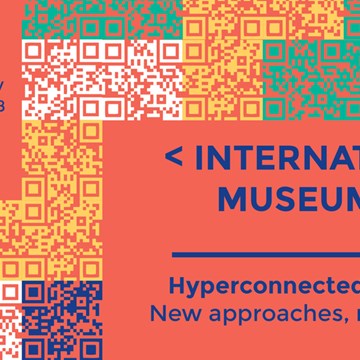MAK Branch Geymüllerschlössel
MAK-Expositur Geymüllerschlössel
The Geymüllerschlössel in Pötzleinsdorf, a neighborhood in Vienna’s suburban outskirts, was put up after 1808 as a “summer building” for the Viennese merchant and banker Johann Jakob Geymüller (1760–1834). Today, it is one of the few places in Austria offering an authentically original look at the diversity of Biedermeier decorative art.
Furnished with original furniture from the first half of the 19th century, the Geymüllerschlössel joins its park, in which contemporary artistic stances are presented, to form an ensemble in which nature and art, as well as historical and contemporary artistic stances, enter into dialog with one another: in 1997, Hubert Schmalix’ sculpture Der Vater weist dem Kind den Weg [The Father Shows the Way to His Child] (1996) was set up in the Geymüllerschlössel’s park, and autumn 2004 saw the permanent addition of the skyspace work The other Horizon (1998/2004) by American artist James Turrell.
In keeping with the MAK’s programmatic emphasis on putting historical artistic heritage in dialog with contemporary artistic movements, early 2012 saw the MAK DESIGN SALON begin opening the villa up to present-day design and making space for intertemporal juxtapositions. The intent is to have internationally renowned designers deal here with the transformative era of the early 19th century and the building in its role as a museum location in order to shed light on both stylistic and societal ties to the present day.
In its architectural language, the building itself exhibits a mix of Gothic, Indian, and Arabian stylistic elements that is quite common in buildings from the early 19th century, above all summer residencies. To this day, the name of the architect remains unknown. The estate was purchased in 1888 by textile industrialist Isidor Mautner, who mortgaged it to the Austrian National bank in 1929. When Nazi-controlled Germany annexed Austria in 1938, the heirs of Isidor Mautner (who had passed away in 1930), being Jewish, lost all citizenship rights and were forced to flee persecution by the Nazi regime. The mortgage on the Geymüllerschlössel was transferred to Germany’s Reichsbank, which seized the building as compensation for the outstanding debt in 1944.
After the end of World War II, ownership passed to the Austrian National Bank, which in turn sold the Geymüllerschlössel to the Republic of Austria in 1948. The funds for this purchase were supplied by Franz Sobek, who in return received the lifelong right to live in the villa and supervised the building’s renovation over the years that followed. In 1965, the Republic of Austria bought Sobek out of his rights to the property, and the Geymüllerschlössel was incorporated into the MAK as a museum branch.
Together with the building, Dr. Franz Sobek’s important collection of 160 old-Viennese clocks dating from the period between 1760 and the second half of the 19th century also came into the possession of the MAK, as did furniture made between 1800 and 1840. Complimented by Empire and Biedermeier furniture from the MAK Collection, these clocks number among the most important points of interest at the Geymüllerschlössel.Guided tours every Sunday 3 p.m. (held in German), May till November
Renovations carried out during the late 1980s returned the façade and parts of the paintwork on the building's interior to their original states. Thanks to this and to the subsequent rearrangement of the clocks and furniture among the various rooms, today’s visitors still receive an impression of a wealthy bourgeois summer residence done in the Empire and Biedermeier styles. Careful attention in the refurbishment was given to the textile decorations of the building as well as to the furniture’s upholstery, thanks to which the Geymüllerschlössel is now the only remaining place in Austria that affords an authentic insight into the diversity of ways in which textiles were employed in Biedermeier interior decorating.
Opening Hours
1. May till 30. November 2014Every Saturday and Sunday
11 a.m. –6 p.m.
Open on Friday, 26. September 2014
Admission
(incl. participation in a guided tour)€ 9.90 / reduced € 7.50
Free admission for children and teens up to 19
The admission ticket is also valid for a visit to the MAK on the same day.
Guided Tours
Every Sunday 3 p.m. (held in German), May till NovemberWalkarounds and various expertguided theme tours afford an insight into a variety of different aspects of Biedermeier life.
Special tours on a variety of subjects bookable for individuals and groups, also outside opening hours.
Information and inquiries T +43 1 711 36-298, education@MAK.at
Other venues
Exhibitions and events
We don't have anything to show you here.
Educational programs
We don't have anything to show you here.







